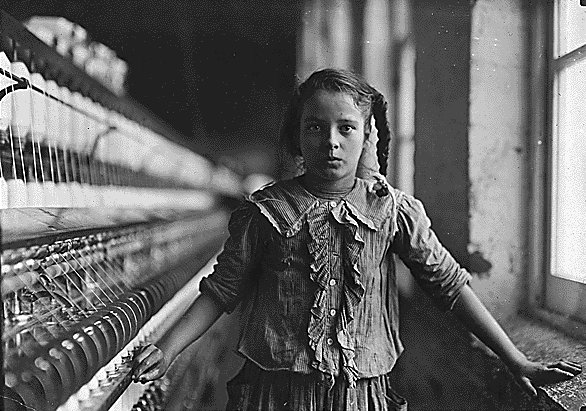6
Things We Need To Fix Now

Labor Day began during a time when people in the United States were working 12-hour days, seven days a week to survive. (Sound familiar?)
Children were working, too – some as young as 5 and 6 years
old — at a small fraction of the adult wage. To make things even worse, there
were no safety standards, which meant deaths and injuries on the job were just
accepted as a risk of trying to feed yourself and your family.
Unions
were beginning to take hold as a balance, fighting back against all of this and
the extreme political power that the Rockefellers and the Carnegies held as well.
On September 5, 1882,
10,000 workers took to the streets in New York City and marched from City Hall to
Wendel’s Elm Park. This was to be the first Labor Day parade.
Why did they march? Primarily for the eight-hour work
day. They were tired of working all day and all night, and they
were willing to risk jail and loss of their jobs in order to fight for a
better life.
It
actually took 12 years for it to become a national holiday, when a massive
strike was put down by federal
troops, and Congress decided it was time to appease working
people with a symbolic gesture. You know, kinda like Congress usually does —
symbolic gestures are its stock-in-trade.
$7.25 is nowhere close to a living wage for anyone. I post
things regularly about minimum wage on my public Facebook page,
and the usual pushback from haters is, “It was never meant to be a living
wage.”
Oh, yeah? The architect of the minimum wage, none other than
Franklin Delano Roosevelt, said some things about that in the Statement on National
Industrial Recovery Act in 1933 and also in the years leading up
to it first becoming law in 1938:
No business which depends
for existence on paying less than living wages to its workers has any right to
continue in this country.”
And:
By living wages, I mean
more than a bare subsistence level — I mean the wages of a decent living.”
The real dollar value of the minimum wage has gone
down from a high in 1968, of about $11 to what it is today, $7.25. Remember that
little issue of people working 12-hour days, seven days a week, 130-some
years ago, that kinda started the Labor Day concept?
Well,
people today working for minimum wage frequently have to do exactly that in
order to survive. And this does not include the fact that some tipped workers
make $2.13 an hour minimum wage before tips. Not even
kidding.
(And another bonus: When we raise the minimum, it floats all
boats.)
This is something that some politicians are trying to get rid
of in some states. What does it do?
Basically, it gives tax credits to low and moderate income workers,
especially those with kids. And tax credits for working people and poor people
help them buy the basics, like food, some basic medicines, and — with luck —
maybe some transportation. Which … creates jobs.
3. Universal,
Affordable Child Care
Access to affordable child care is something that
working people — especially moms — need, and frequently don’t have, in order to
be able to do their jobs and even get promoted to better-paid positions in
the companies and organizations where they work. Bringing your kid to work
sounds like something fun to do maybe one day a year, but otherwise … umm, no.
4. Good Schools
and Access to College
Good schools make a vast difference in the lives of the kids
who go to them, but attacks on education and those who work in schools — which
started with the Great Recession of 2008 — continue even today. We need to change
our priorities, folks. Pronto.
5. Health
Insurance for all.
 Despite its problems, Obamacare — a.k.a. the Affordable Care
Act — is working and making a difference in the lives
of millions of people. But the real solution is a universal health care system — something that the ACA took
the place of. It’s obvious that this is the way we need to go, like most of the
sane industrialized world.
Despite its problems, Obamacare — a.k.a. the Affordable Care
Act — is working and making a difference in the lives
of millions of people. But the real solution is a universal health care system — something that the ACA took
the place of. It’s obvious that this is the way we need to go, like most of the
sane industrialized world.
6. Union Rights
Union membership in the private sector is the lowest it’s
ever been. At the same time, good union jobs in the public sector have been
under attack for at least 30 years.
One huge way we can fix that is
through card check recognition — that is, if enough people at a
company or work location put their signature on cards that say they want to be
members, the company signs off on it and that’s it.
No campaigns to threaten
workers (as happened at my last employer), no long, drawn-out election
processes where some workers can be fired — and therefore the rest intimidated
— simply recognize the union and done.
OK, how to get there?
Maybe spread this around on social media — let’s get some people talking about
these issues on Labor Day!
